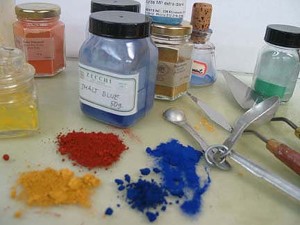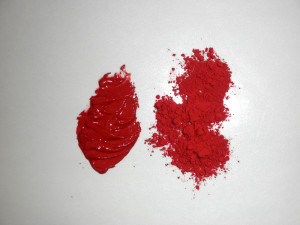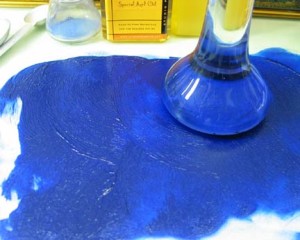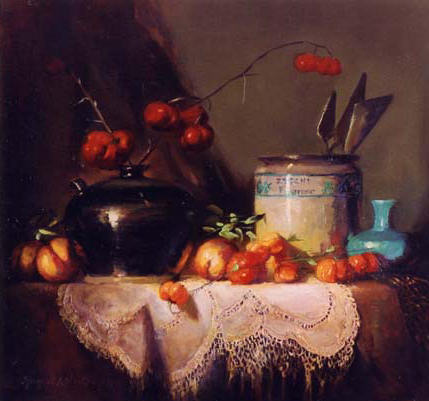In the late summer and fall of 2003, Dave and I spent 10 lovely weeks in Italy. This trip was planned specifically for me to paint the beauty of the countryside and soak up the endlessly interesting Italian culture. Chantal Kelly, our talented travel agent, knew all the best and picturesque places to stay and we were never disappointed with our location or accommodations.
After a week long class in San Gimingnano, we set out on a great adventure through Tuscany, Umbria, Val d’Orcia, and Santa Margherita. We spent our final splendid week in Florence in a centuries old apartment near the Arno. As it turned out, the apartment was just a few blocks away from the Uffuzi Gallery!
Zecchi Colori Belle Arti: The Dick Blick of Italy
One of the highlights of our stay in Florence was a visit (actually there were two visits) to a centuries old art supply shop: Zecchi’s Art Supply. This shop has great importance to Florentine artisans and painters and is in a building that is part of the historic Studio Fiorentino dating back to 1348.

The Zecchi Firm took over the shop in the fifties and based the business on the fourteenth-century Cennino Cennini’s treatise Il Libro Dell’Arte. Zecchi’s Art Supply’s goal was to revive or reproduce all the colours and materials used by pre-Renaissance and Renaissance painters.
I spent an afternoon browsing through the store purchasing rare natural pigments, mediums, and sundry art supplies. One afternoon just wasn’t long enough so we returned the next day for another visit. It was here that my passion for historical natural pigments and oil painting techniques of the masters began to blossom.
Luscious Colors to Bring Home

Right – Cinnabar dry pigment

Natural Pigments Put to Use in an Oil Painting
The first oil painting was completed using many of the natural pigments purchased at the historic art supply store including cinnabar, azurite, sienna, terra verte, yellow ochres, lapis lazuli, umbers, and so many other magical colors. The still life also depicts some of the objects that I purchased there including palette knives and the Zecchi jar. Three years later, I began my Lessons from the Low Countries Pigment Project, one of many projects researching and experimenting with endlessly splendid natural pigments. Many more projects are yet to come!

Oil on Linen
Copyright Margret E. Short
First Place Award, Salmagundi Club New York 2005

Artists paint from the kaleidoscope of their accumulated experiences. Thank you for adding a foundation layer to that knowledge. I thoroughly enjoy your postings.
Hello Louise, It is so true. Over time everything comes together in a salmagundi stew, then swirls and simmers. New ingredients are added with each new experience. While we tap into the reserve, it continues to be re-energized with new ideas, thoughts, and creativity. So glad to know you enjoy my posts. Thank you for your thought. Margret
Your trip to Italy was and still is amazing!
Yes, Judy, this trip to Italy was amazing. I look back with fond memories of the time we spent there.